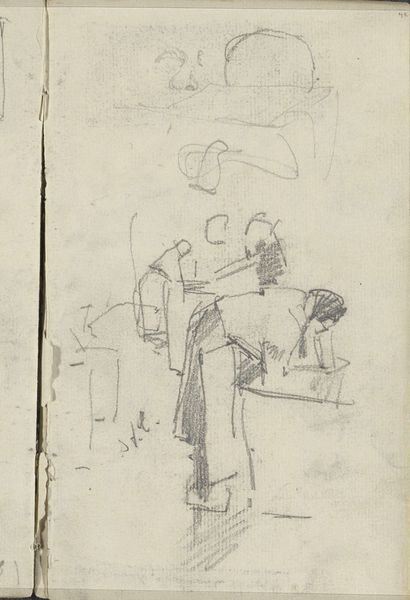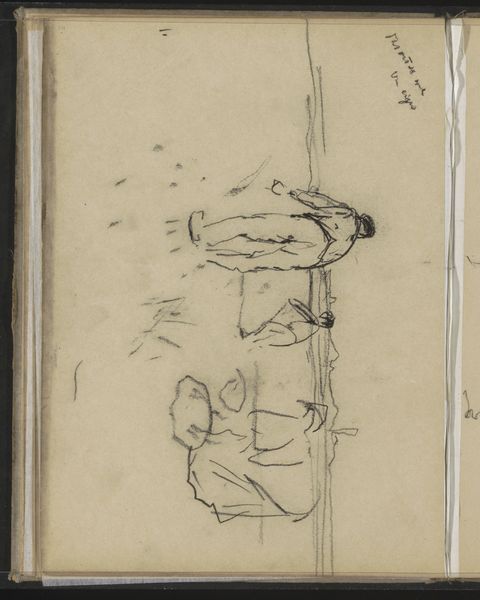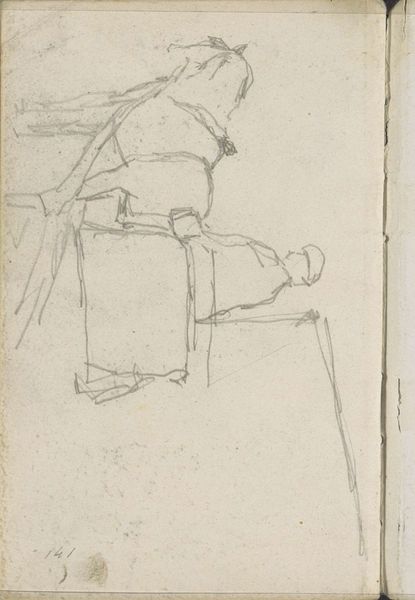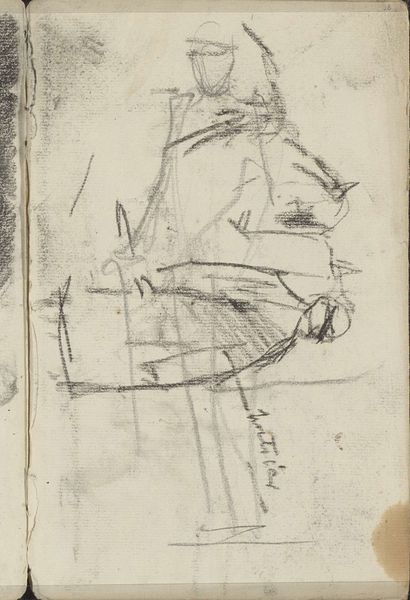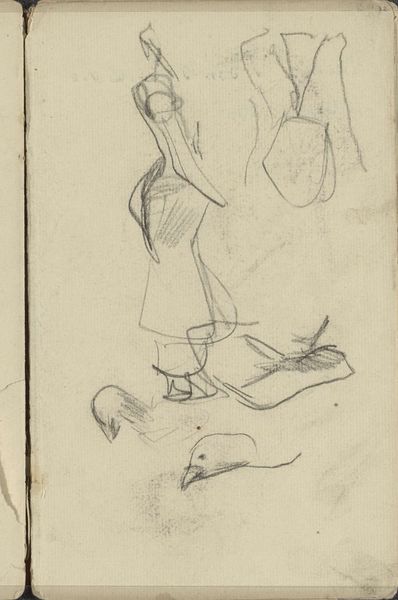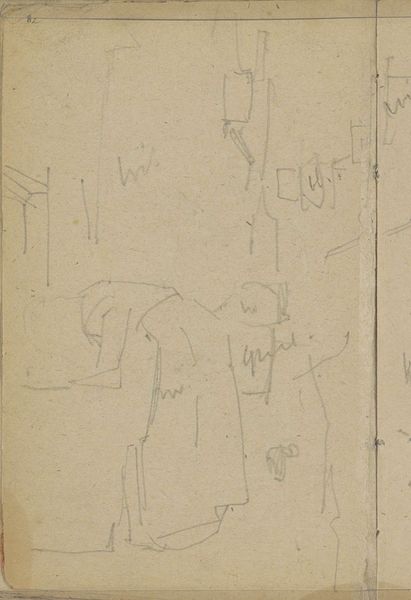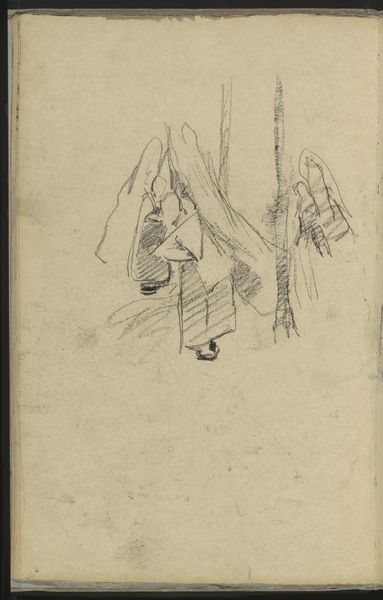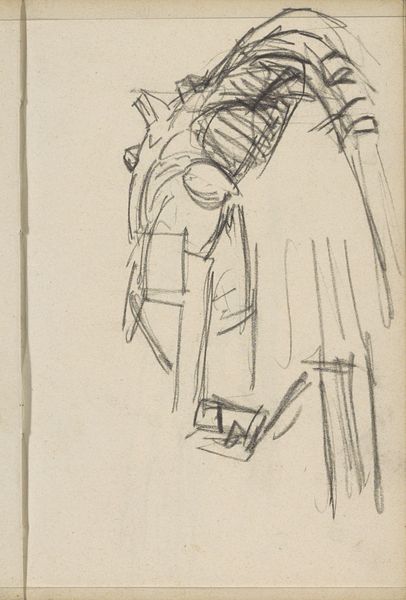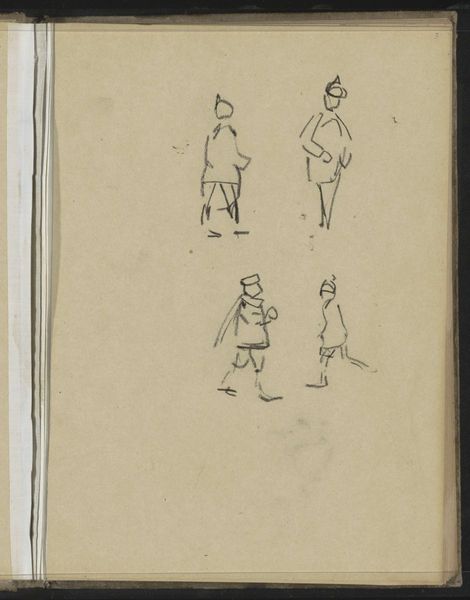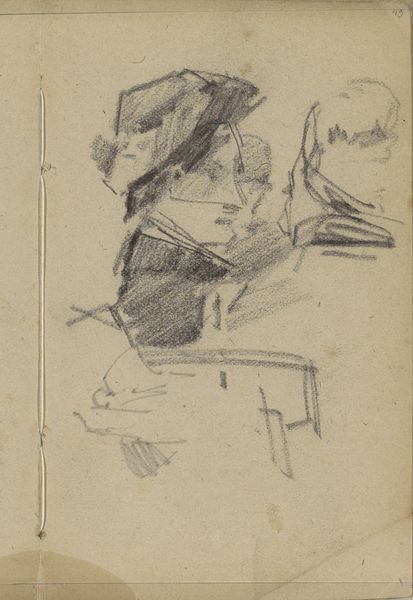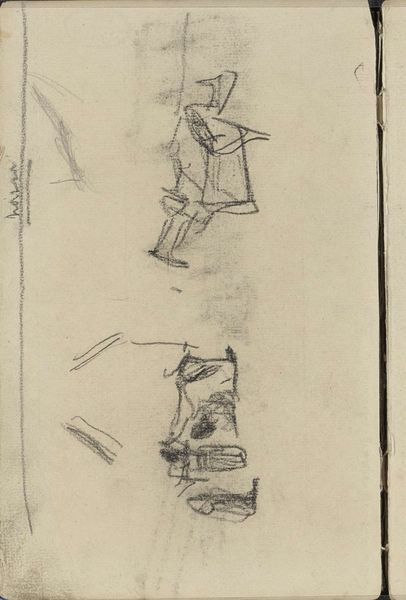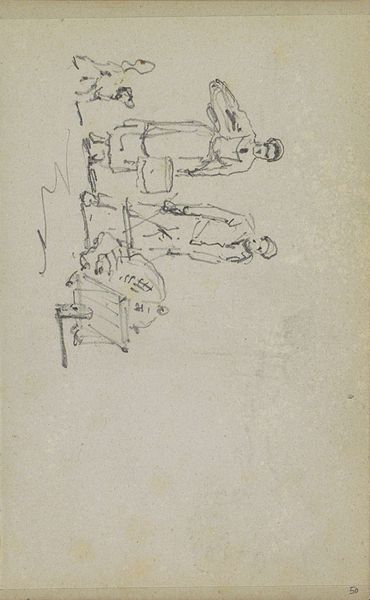
#
light pencil work
#
mother
#
quirky sketch
#
sketch book
#
personal sketchbook
#
idea generation sketch
#
sketchwork
#
sketchbook drawing
#
storyboard and sketchbook work
#
sketchbook art
#
initial sketch
Dimensions: height 125 mm, width 71 mm
Copyright: Rijks Museum: Open Domain
Editor: So, this is "Vrouw met twee kinderen" by George Hendrik Breitner, a pencil drawing from around 1886 to 1923, here at the Rijksmuseum. It feels really intimate, like a quick glimpse into everyday life. What do you see in this piece, considering the time it was made? Curator: Well, Breitner's work often gives us these snapshots, doesn't it? Thinking about it historically, the late 19th century was a period of intense social change and urbanization. Breitner, known for his interest in capturing the everyday, presents us with this fleeting image of a mother and children. Notice how it is very quick and unrefined - it almost feels accidental that we get this glimpse. In that period, do you feel a scene like this may carry more weight or relevance? Editor: Maybe it was pushing back against more idealized images of motherhood at the time? A more honest representation of working-class life? Curator: Exactly. And think about where these images end up - sketchbooks. How does that shift our perception away from this piece being viewed as 'high' art? It almost humanizes Breitner, making his work seem accessible and relatable, rather than aloof. What do you think is most striking about that human element captured in museums or sketchbooks? Editor: I guess it makes history feel closer. It's easy to get lost in grand narratives, but seeing these everyday moments reminds us of the real people living through those times. Curator: Precisely. By studying the 'lowly' drawing in a museum, we are really seeing the politics of imagery being transformed. Instead of elevated oil paintings or portraits, museums preserve raw sketches and allow us to experience intimacy with the past. Editor: I never thought about the public role of even the most informal art in quite that way. Curator: That's the fascinating thing about history; it gives us new ways to frame what we thought we knew. Thanks!
Comments
No comments
Be the first to comment and join the conversation on the ultimate creative platform.
